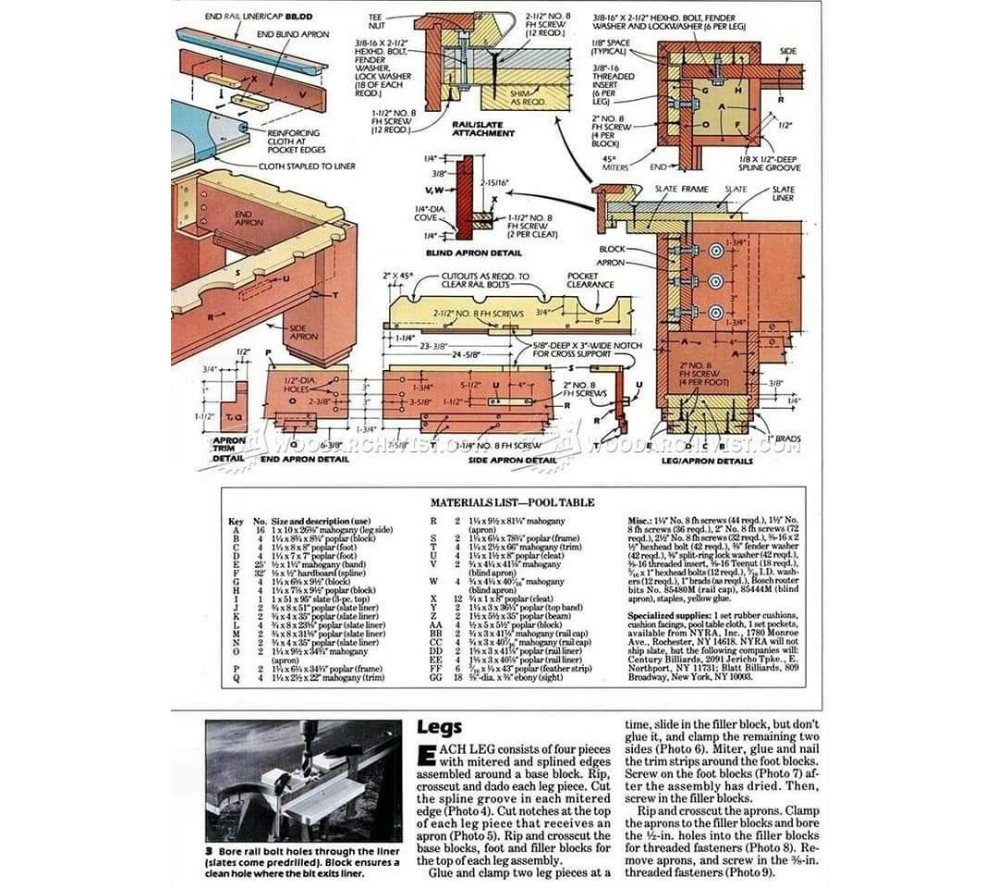Image Content Description:
This image is a section of a woodworking guide, likely for constructing a piece of furniture (such as a table or workbench) with four-legged support. The instructions detail the assembly of the legs, base blocks, aprons, and fasteners, emphasizing precision and structural integrity.
Key Steps Outlined in the Guide:
1. Leg Construction
-
Each leg is made from four mitered pieces with splined edges for reinforcement.
-
Steps:
-
Rip, crosscut, and dado each leg piece.
-
Cut spline grooves into the mitered edges (referenced in Photo 4).
-
Cut notches at the top of each leg to receive the apron (referenced in Photo 5).
-
Prepare base blocks, foot blocks, and filler blocks (ripped and crosscut).
-
2. Gluing & Clamping the Leg Assembly
-
Glue and clamp two leg pieces at a time, inserting the filler block (but not gluing it).
-
Complete the assembly by clamping the remaining two sides (referenced in Photo 6).
-
Miter, glue, and nail decorative trim strips around the foot blocks.
-
Attach foot blocks with screws after drying (referenced in Photo 7).
-
Secure filler blocks with screws.
3. Apron Installation
-
Rip and crosscut the aprons (horizontal supports between legs).
-
Clamp aprons to filler blocks and drill ½-inch holes for threaded fasteners (referenced in Photo 8).
-
Remove aprons, then screw in ¾-inch threaded fasteners (likely a typo; should be ½-inch to match holes) (referenced in Photo 9).
Notable Details:
-
Joinery Techniques: Splined miters, dadoes, and notches ensure strength.
-
Modular Assembly: Filler blocks allow for disassembly/reinforcement.
-
Hardware: Threaded fasteners (possibly bolts or inserts) for secure apron attachment.
-
Visual References: Mentions Photos 4–9 (not visible here), likely showing critical steps like spline cutting, clamping, and fastener installation.
Context & Purpose:
This guide is likely part of a furniture-making manual (e.g., for a workbench, dining table, or heavy-duty stand). The emphasis on threaded fasteners suggests a design that may need disassembly for transport or adjustments.

